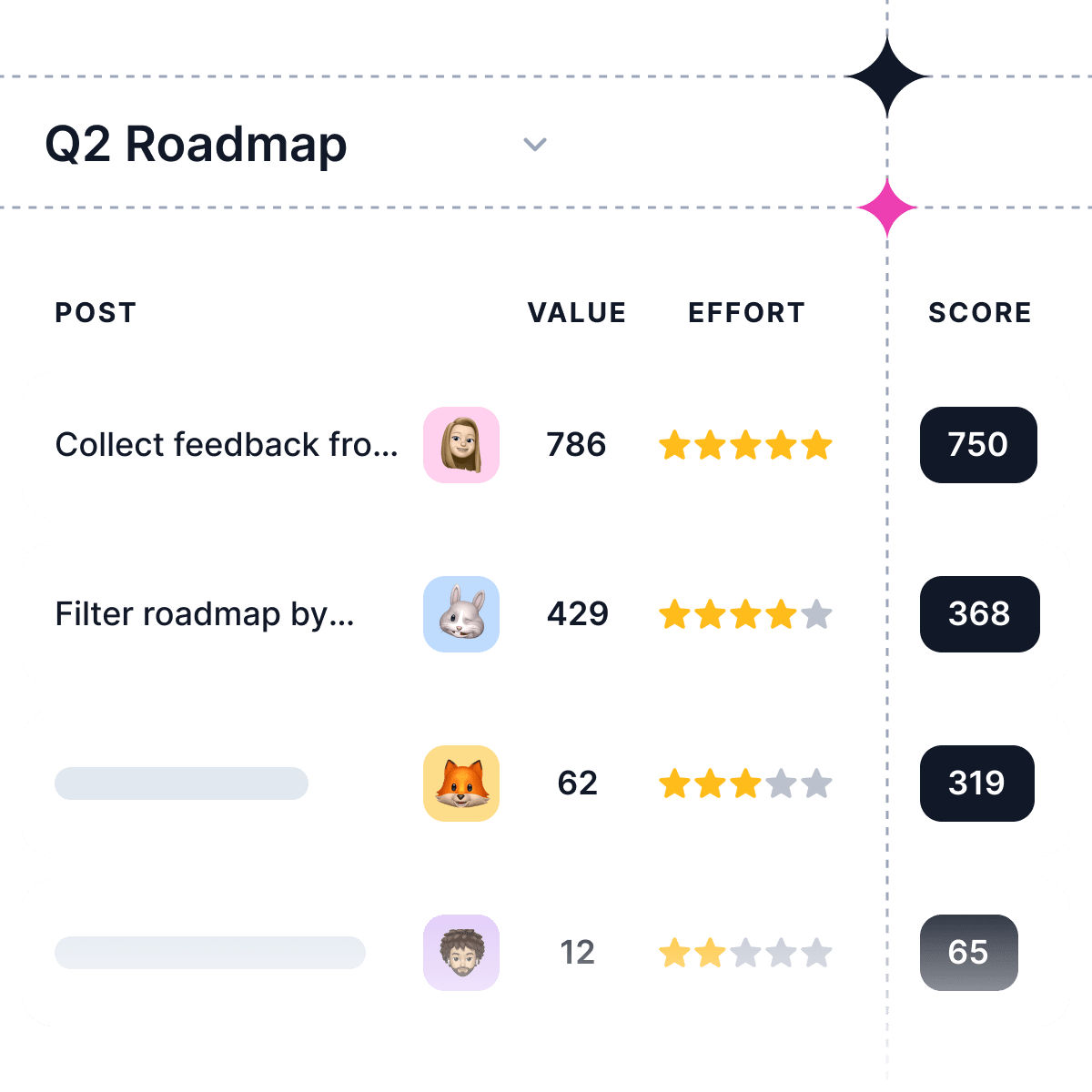In today's competitive Software as a Service (SaaS) landscape, understanding and acting on customer feedback is essential for growth & success.
One of the most important ways to collect customer feedback is to ask for it directly. This can be done through surveys, interviews, or other direct contact with customers. Additionally, it's important to make sure that customers feel comfortable giving feedback and that they know their opinions are valued. Developing a feedback loop between your team and customers is essential for fostering an environment of trust.
This blog post will delve into the importance of collecting customer feedback, how to effectively gather it, and how to translate that valuable information into actionable steps for your SaaS business.
We'll cover various methods of obtaining feedback, tips for analyzing it, and strategies for implementing changes based on the insights you've gained. By the end of this post, you'll have a solid foundation to help you make data-driven decisions that will enhance your customers' experience and drive long-term loyalty.
Why Collect Customer Feedback in SaaS?
Collecting customer feedback in the SaaS industry is crucial because it provides valuable insights into how users are interacting with your product, what product features they find most useful, and where there may be opportunities for improvement. These insights are essential for driving product development, improving customer satisfaction, and ultimately, increasing customer retention and revenue.
Customer feedback in SaaS is a vital component of business success for several reasons:
Reduce Churn Rate
When customers feel heard and valued, they are more likely to stay loyal to your brand. Addressing their concerns promptly helps in reducing churn rates. Regularly gathering feedback also enables you to detect potential issues early on, before they escalate into major problems that could lead to customer attrition.
Identify Strengths and Weaknesses
Collecting customer feedback helps you identify the strengths and weaknesses of your SaaS product. By understanding what customers like and dislike, you can prioritize improvements to enhance their experience. This will ultimately lead to increased customer satisfaction and retention.
Gain Competitive Advantage
Understanding your customers' needs and expectations allows you to stay ahead of your competition. By staying informed about what your customers want, you can adapt quickly, innovate effectively, and maintain a competitive edge in the market.
Foster Customer Advocacy
Happy customers become brand advocates who recommend your product or service to others. By addressing their feedback effectively, you not only improve their experience but also increase the likelihood of them promoting your business through word-of-mouth marketing or positive online reviews.
Enhance Product Development
Customer feedback provides valuable insights into how users interact with your product and what features they find most useful or lacking. This information is crucial for guiding future product development efforts, ensuring that you invest resources in areas that will have the most significant impact on user satisfaction.
Ways to Collect and Act on SaaS Feedback
1. In-App Feedback Widgets
In-app feedback widgets like Supahub allow users to provide feedback directly within your SaaS application. This method fosters real-time feedback and provides valuable context for understanding user concerns. Consider these tips when implementing in-app feedback widgets:
-
Make It Accessible: Ensure the widget is easy to locate and use without disrupting the user experience.
-
Prompt Users at the Right Time: Trigger feedback requests after users complete specific actions or reach certain milestones.
-
Categorize Feedback: Allow users to categorize their feedback (e.g., feature requests, bug reports, etc.) to streamline your analysis process.
2. In-app Surveys
In-app Surveys are a popular and effective means of collecting feedback. They can be distributed via email, in-app messaging, or your website. Here are some best practices for using surveys:
-
Keep It Short: Limit your survey to a few essential questions to maximize completion rates.
-
Use Open-Ended Questions: Encourage users to share their thoughts and experiences in their own words.
-
Be Specific: Focus on particular aspects of your product or service to obtain detailed, actionable feedback.
3. Customer Interviews
Conducting one-on-one interviews with customers provides an opportunity for a deeper understanding of their needs, preferences, and pain points.
Action: Utilize the information gained through interviews to make informed decisions about feature enhancements, user interface improvements, or any other aspect that may enhance customer satisfaction.
4. Social Media Monitoring
Monitor social media channels for mentions of your brand or product to gain insight into what customers are saying about your offering.
Action: Address any issues or concerns raised by customers on social media promptly and use their feedback to improve your product or service.
5. Analyzing Support Tickets
Review support tickets submitted by customers to identify common issues, trends, or concerns that may warrant attention.
Action: Implement solutions based on recurring problems identified in support tickets. This will help reduce the number of similar issues in the future and improve overall customer satisfaction.
6. Net Promoter Score (NPS) Surveys
Net Promoter Score surveys measure customer loyalty by asking them how likely they are to recommend your product or service to others.
Action: Use NPS results as a benchmark for customer satisfaction over time. Identify areas where improvements can be made to increase your score and turn passive users into promoters who actively refer others to your business.
7. Analyze Product Usage Data
Analyze product usage data to identify trends, patterns, and areas where users may be encountering difficulties or not utilizing the full potential of your SaaS offering.
Action: Leverage this data to optimize your product's user experience, prioritize feature improvements, and develop targeted marketing campaigns to educate users about underutilized features or functionalities.
8. Customer Advisory Boards
Form a group of customers who are willing to provide regular feedback on your product and act as sounding boards for new ideas or features.
Action: Leverage the insights gained from customer advisory boards to guide product development decisions and ensure you're addressing the needs of your most engaged users.
9. Encourage Internal Feedback Culture
Promote a culture within your organization that values and encourages feedback from team members. By involving employees in the feedback process, you can gain additional insights and perspectives that may not be apparent from customer feedback alone.
Action: Implement internal feedback channels, such as team meetings or suggestion boxes, to gather input from employees on product improvements, processes, or other aspects of your business. Recognize and reward those who contribute valuable ideas or solutions.
By employing these methods for collecting and acting on SaaS feedback, you'll be better equipped to understand your customer's needs, improve their experience, and drive long-term loyalty.
Conclusion
In conclusion, collecting and acting on customer feedback is a vital component for the success of any SaaS business. By implementing a variety of feedback collection methods, such as in-app widgets, surveys, interviews, and social media monitoring, you can gain valuable insights into your customer's needs and preferences.
Analyzing this data helps identify areas for improvement, reduce churn rate, enhance product development, and ultimately increase customer satisfaction and retention. By fostering a culture that values feedback and continuously strives to improve the user experience, your SaaS company will be well-positioned to maintain a competitive advantage in the market and drive long-term growth.






